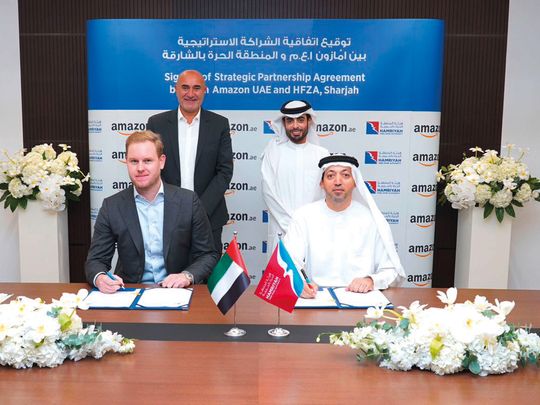
When the Hamriyah Free Zone Authority (HFZA) signed a lease agreement last year in October with the local arm of global logistics and e-commerce brand, Amazon, it marked a new era in innovation and economic growth for the Northern Emirates, while also highlighting the importance of the logistics sector for the UAE and the region.
Big on numbers
In a study released by global research and consulting firm, Precedence Research last year, predictions are the global logistics sector will be worth around $18.23 trillion by the year 2030, with a CAGR of 10.7 per cent between 2023 and 2030. Closer to home in the region, the UAE is expected to be a major contributor to growth of the logistics sector, around the same timeframe.
Figures released by global market research firm Mordor Intelligence predict the UAE logistics sector to be worth approximately $30.19 billion by 2030, with a CAGR of 7.01 per cent during the period 2024-2030. And while conventional logistics and the push and pull of market forces are expected to play their parts in supporting the industry, new-age technologies are being seen as the catalysts expediting growth.
These include everything from automation systems, cloud-based logistics platforms, and digital twins for equipment monitoring and warehouse simulation, as well as AI-driven optimisation software, IoT networks for real-time supply chain visibility, and blockchain options for freight tracking.
Make technology work for you
A study published in October last year on LinkedIn by international freight forwarding services platform, Think Global Logistics presents a bird’s eye perspective on technology trends in logistics in the near future and how they could positively impact the sector.
For instance, a key area that should see technology making a significant impact in logistics globally is in inventory management. With the help of smart sensors and IoT devices, warehouses can already monitor stock levels in real-time, allowing for better inventory planning and optimisation. The move reduces costs in the long term while also aiding in customer satisfaction, ensuring products are available when needed 24/7.
Last-mile delivery
Logistics firms have been working overtime in the past decade in ironing out niggles in last-mile delivery modules. Now, with drones and autonomous vehicles stepping into the picture, a lot of these theories have started to make sense to industry players, and in real time. Innovation in the space thanks to these instruments are helping last-mile delivery solutions to not just be faster and more cost-effective, they are also environmentally friendly, helping reduce carbon emissions associated with traditional delivery methods.
Locally, players such as HFZA are already in sync with such systems. In an exclusive chat, Saud Salim Al Mazrouei, Director, HFZA agrees with the idea of embracing new-age technology to help the free zone and logistics sectors evolve and move to the next level of growth.
He says, “As market dynamics and demand evolve, HFZA is committed to thinking innovatively to sustain its growth trajectory. Over the next five years, our growth strategy revolves around diversification, innovation, and sustainability. We aim to expand our portfolio of industries beyond traditional sectors while leveraging emerging technologies to enhance efficiency and competitiveness.”







